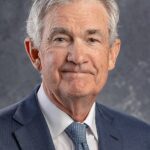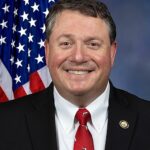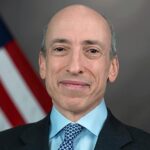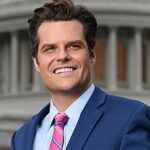 1. Recent Leadership and Key Actions as Fed Chair
1. Recent Leadership and Key Actions as Fed Chair
Jerome Hayden “Jay” Powell has served as the 16th Chair of the U.S. Federal Reserve since February 2018, making him one of the most influential figures in global economic policy. Originally nominated to the Federal Reserve Board of Governors by President Barack Obama in 2012, Powell was elevated to Chair by President Donald Trump and later re-nominated for a second term by President Joe Biden in 2021. His current term as Chair runs through May 15, 2026, while his underlying term as a governor extends to January 31, 2028.
Powell’s tenure has been defined by major crises and rapid shifts in the economic landscape. Early in his term, he continued the gradual interest rate hikes that began under Janet Yellen, as the Fed sought to normalize policy after years of ultra-low rates following the 2008 financial crisis. That trajectory changed dramatically in 2020 with the COVID-19 pandemic. Under Powell’s leadership, the Fed slashed short-term interest rates to near zero, launched large-scale asset purchases, and opened a series of emergency lending facilities designed to stabilize financial markets and keep credit flowing to households, businesses, and state and local governments.
These actions, often described as an aggressive and rapid response, helped avert a full-scale financial meltdown at the onset of the pandemic, although they also set the stage for debates about asset prices, inequality, and longer term inflation. As the recovery strengthened, inflation surged in 2021 and 2022, driven by supply chain disruptions, strong demand, pandemic-era stimulus, and other global shocks. Powell initially characterized much of this inflation as “transitory,” a view that later drew criticism as price pressures proved more persistent.
In response, Powell and the Federal Open Market Committee (FOMC) embarked on one of the most aggressive interest rate hiking cycles in decades. Between 2022 and 2023, the Fed raised the federal funds rate repeatedly and began shrinking its balance sheet, reducing its assets by trillions of dollars from the peak. The aim was to bring inflation back toward the Fed’s 2 percent target while trying to avoid a deep recession. Many observers describe the outcome to date as a tentative “soft landing,” with inflation easing from its peak without a severe spike in unemployment, although the longer term verdict is still evolving.
More recently, Powell has had to navigate a delicate balance between persistent inflation risks and signs of cooling in the labor market. At high profile events such as the Federal Reserve’s annual Jackson Hole symposium, he has signaled cautious openness to potential rate cuts if economic conditions weaken, while also warning about the danger of cutting too soon and risking a renewed inflation surge. He has emphasized that policy decisions will remain data driven and that the central bank will adjust as needed to fulfill its dual mandate.
Powell’s leadership has been tested not only by economic volatility but also by intense political pressure. President Trump publicly criticized Powell for keeping interest rates “too high” and at times suggested replacing him. At the same time, members of Congress from both parties have pressed him on inflation, unemployment, banking regulation, and climate related financial risks. Throughout these disputes, Powell has consistently emphasized the Fed’s mandate of maximum employment and stable prices, and the importance of making decisions based on economic and financial data rather than partisan politics.
Overall, Powell’s recent record as Fed chair is defined by crisis management, rapid policy shifts, and attempts to maintain credibility in an era of strong inflation shocks and political polarization. Supporters argue that he has helped steer the economy away from catastrophe multiple times, while critics contend that the Fed under his watch was too slow to recognize the inflation problem and too willing to support financial markets.
2. Early Career, Education, and Path to the Fed
Jerome Powell was born on February 4, 1953, in Washington, D.C., into a family with strong legal and academic roots. He grew up in the Washington suburbs and attended Georgetown Preparatory School, a Jesuit institution that has educated several future high profile public officials.
Powell studied politics at Princeton University, graduating with an A.B. in 1975. His senior thesis focused on political change in South Africa, which reflected an early interest in international and policy issues. After graduation, he worked as a legislative assistant to Senator Richard Schweiker, a Republican from Pennsylvania, which gave him firsthand exposure to Capitol Hill and the legislative process. He then attended Georgetown University Law Center, where he served as editor in chief of the Georgetown Law Journal and received his J.D. in 1979.
Powell began his professional career in law, clerking for a federal appellate judge and then joining the New York law firm Davis Polk & Wardwell. He later moved into financial work and investment banking, joining Dillon, Read & Co., where he focused on financing and mergers and acquisitions and rose to the position of vice president.
In 1990, Powell shifted from Wall Street to public service, joining the U.S. Treasury Department under President George H. W. Bush. He served as Assistant Secretary for Financial Institutions and later as Under Secretary for Domestic Finance, where he was involved in financial regulation, the government debt market, and policy responses to stresses in the banking system.
After leaving the Treasury in 1993, Powell returned to the private sector and built a substantial career in private equity, joining The Carlyle Group, a major global investment firm, where he became a partner. He later co-founded his own private equity venture, Severn Capital Partners. Along the way, he served on corporate boards and on nonprofit and academic boards, including roles with the Nature Conservancy and Princeton’s Bendheim Center for Finance.
Before reentering government service at the Fed, Powell was a visiting scholar at the Bipartisan Policy Center, where he worked on fiscal and economic issues, including the federal debt limit. This experience reinforced his reputation as a pragmatic, policy focused Republican who was comfortable working in bipartisan settings.
In 2012, President Obama nominated Powell to the Federal Reserve Board of Governors, which was an unusual bipartisan move since Powell is a registered Republican. He was confirmed by the Senate and joined the Board, where he initially focused on regulatory issues and bank supervision. His consensus building style, relatively plain language, and lack of academic economic training made him stand out from more traditional PhD economists who often occupy top Fed roles.
Powell has been candid about his nontraditional path to central banking. In public remarks, he has noted that as a student he did not view economics as an obvious career path, and he has encouraged young people to stay open to unexpected turns in their careers. That combination of humility and extensive real world experience in markets and government has shaped both the credibility he holds with market participants and the criticisms he faces as Fed chair.
3. Public Perception, Independence, and Emerging Legacy
As Fed chair, Jerome Powell occupies a position that is formally nonpartisan but unavoidably political in its consequences. Financial markets, businesses, workers, and elected officials all react to Federal Reserve decisions. Powell’s leadership style is often described as pragmatic, incremental, and consensus driven rather than ideological. He is known for speaking in relatively plain language for a central banker, and for explaining complex monetary policy issues in a way that investors and the broader public can follow, even when they disagree with his conclusions.
During the COVID-19 crisis, Powell’s Fed won praise from many economists and policymakers for moving quickly to stabilize markets and support the economy. The Fed’s emergency facilities, massive bond purchases, and low rate policies, combined with fiscal stimulus from Congress, helped prevent a deeper economic collapse. At the same time, critics argue that ultra loose monetary policy fueled asset bubbles, widened wealth inequality, and encouraged excessive risk taking in financial markets.
The inflation surge of 2021 and 2022 is central to how Powell’s legacy will be judged. Supporters say the Fed faced an unprecedented shock and ultimately acted forcefully to bring prices back under control, managing to cool inflation without causing an extreme spike in unemployment. Detractors argue that Powell and the Fed were too slow to pivot away from emergency stimulus, which they believe allowed inflation to become more deeply embedded.
Powell has also become a symbol of central bank independence in an era of intense political pressure. Presidential criticism over interest rate levels, public threats to replace him, and continued calls to cut rates more aggressively have all tested the Fed’s ability to operate at arm’s length from the White House. Legal debates and court signals regarding the difficulty of removing a Fed chair mid term have effectively strengthened Powell’s hand and, by extension, the institution’s independence.
Internationally, Powell is viewed as a cautious but steady anchor for global monetary policy. With the U.S. dollar at the center of the world financial system, Fed decisions under his leadership have affected emerging markets, global capital flows, and exchange rates. During periods of stress, global observers focus closely on his signals about the pace of rate hikes or cuts, and about how quickly the Fed plans to shrink or expand its balance sheet.
As his current term as chair approaches its 2026 end date, debate has already begun about his successor and about how history will view his time leading the Fed. Powell’s emerging legacy combines several distinct elements: crisis manager during COVID-19, architect of a rapid tightening cycle to confront high inflation, defender of central bank independence under political pressure, and a non economist who rose to the top of the world’s most powerful central bank.
Jerome Powell – Key Facts & Resources
- Current role: Chair, Board of Governors of the Federal Reserve System
- In office as Chair since: February 5, 2018
- Date of birth: February 4, 1953
- Education: Princeton University (A.B.), Georgetown University Law Center (J.D.)





